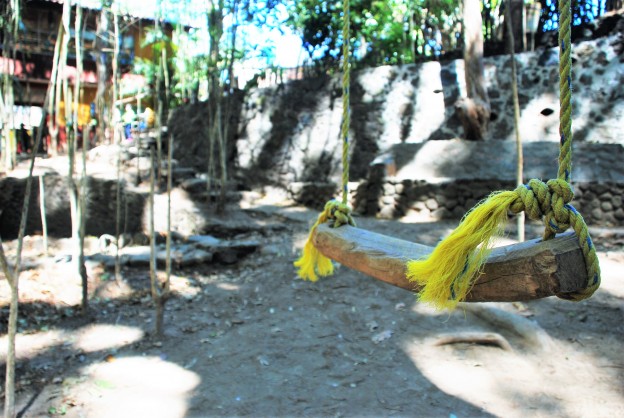During the week of February 13th to February 18th, students from the Education and Migration and Globalization programs lived with host families in the town of Amatlan. In the traditionally indigenous village of Amatlan, we were able to learn about the indigenous attitudes to aspects of schooling, farming, and migration that affect life on both personal and global scales.
A focus of the week was to learn about the relationship between the indigenous community and their natural surroundings. Overall, the people of Amatlan try as best they can to live in harmony with nature. Spiritual traditions surrounding the sacred nature of farming practices prevent land, crops, and animals from being exploited. Currently, the community is engaged in struggles to prevent their environment from exploitations from outside sources like tourism or multinational farming companies. We took an eco-hike with the head of the volunteer wildfire control brigade, who told us the ways that the natural resources have been compromised in a way that puts the whole community in danger. We also heard from an elder named Dona Irene who has protected her own farmlands against chemical fertilizers and genetically modified seeds, and plans to pass her traditional farming practices on to her nephews. Both of these talks showed the ways that the people of Amatlan protect their environment because of the reciprocal relationship they have with their mother earth – if they respect her, she will take care of them.
During the homestay we were also able to visit nearby schools in the city of Tepoztlan. One school in particular followed the teaching philosophy known as Waldorf, that is, teaching without the integration of technology. The school was almost completely engulfed by the trees and ecosystem around it. The environment provided students with an opportunity to learn from one another while simultaneously developing an appreciation for the natural world. The students engaged in classes known as “permaculture” to learn how to create a sustainable and self-sufficient ecosystem. For example, the students recycle scraps of food and biodegradable waste into compost and use it to fertilize the trees and plants that surround their school. After all, the earth provides us with nutrition to thrive, it makes sense to give back to it what we can. Do you or your family compost? A challenge I leave with you from our experiences thus far in Mexico, the next time you’re ready to toss leftover food scraps or biodegradable waste in the trash can, reconsider it as your garden’s next meal. Little by little we can each do our part to return what’s left of the gifts that Mother Nature has given us.


